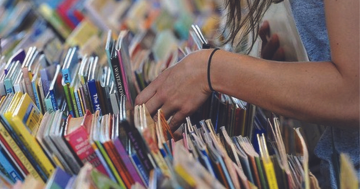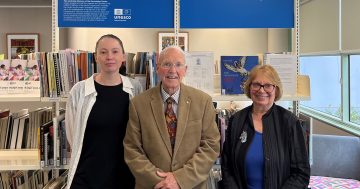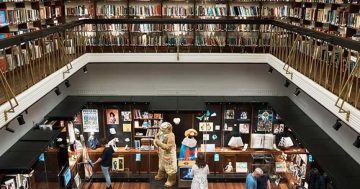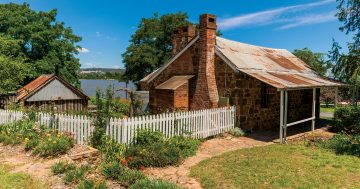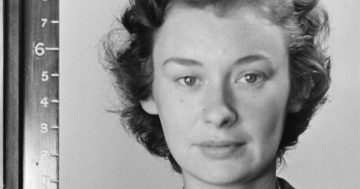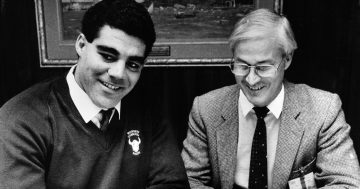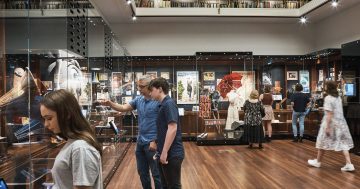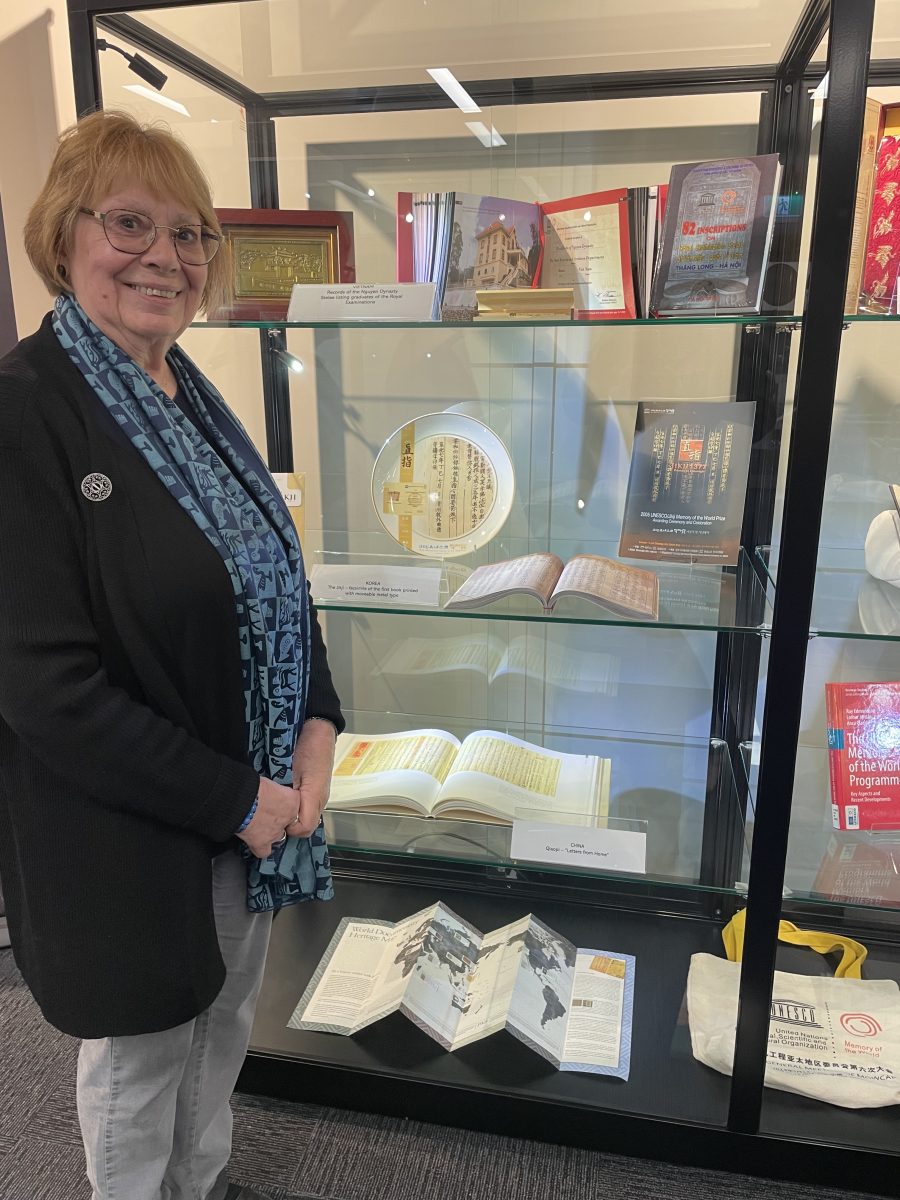
Roslyn Russell at the new display showcasing the UNESCO Memory of the World Register now open at the ACT Heritage Library in Fyshwick. Photos: Sally Hopman
They are some of the most important documents in the world: from the Journal, written in the hand of James Cook aboard the Endeavour in 1768 and design drawings by Walter Burley and Marion Mahony Griffin for Australia’s new capital city to pages of well-known signatures covering the Sorry Book.
These and other documents are held in equally important cultural institutions including the Australian Institute of Aboriginal and Torres Strait Islander Studies, the National Archives of Australia and the National Library of Australia.
They have many things in common, apart from being rich sources of our history and digitised to within an inch of their lives.
They are all part of the Australian Register of the UNESCO Memory of the World Program – a list of our most important documentary items, each one of them nominated for the honour and put through a rigorous program to get there.
Nominating them for the register and subsequently ensuring they are digitised so everyone can access them is a work in progress, according to chair of the UNESCO Australian Memory of the World Committee, Canberra historian and consultant Roslyn Russell.
This week, Dr Russell launched the Australian Memory of the World Knowledge Centre display at the ACT Heritage Library in Fyshwick. It’s designed to showcase the wider story of the UNESCO Memory of the World Register and specifically, how the program is working to safeguard the important documentary heritage.
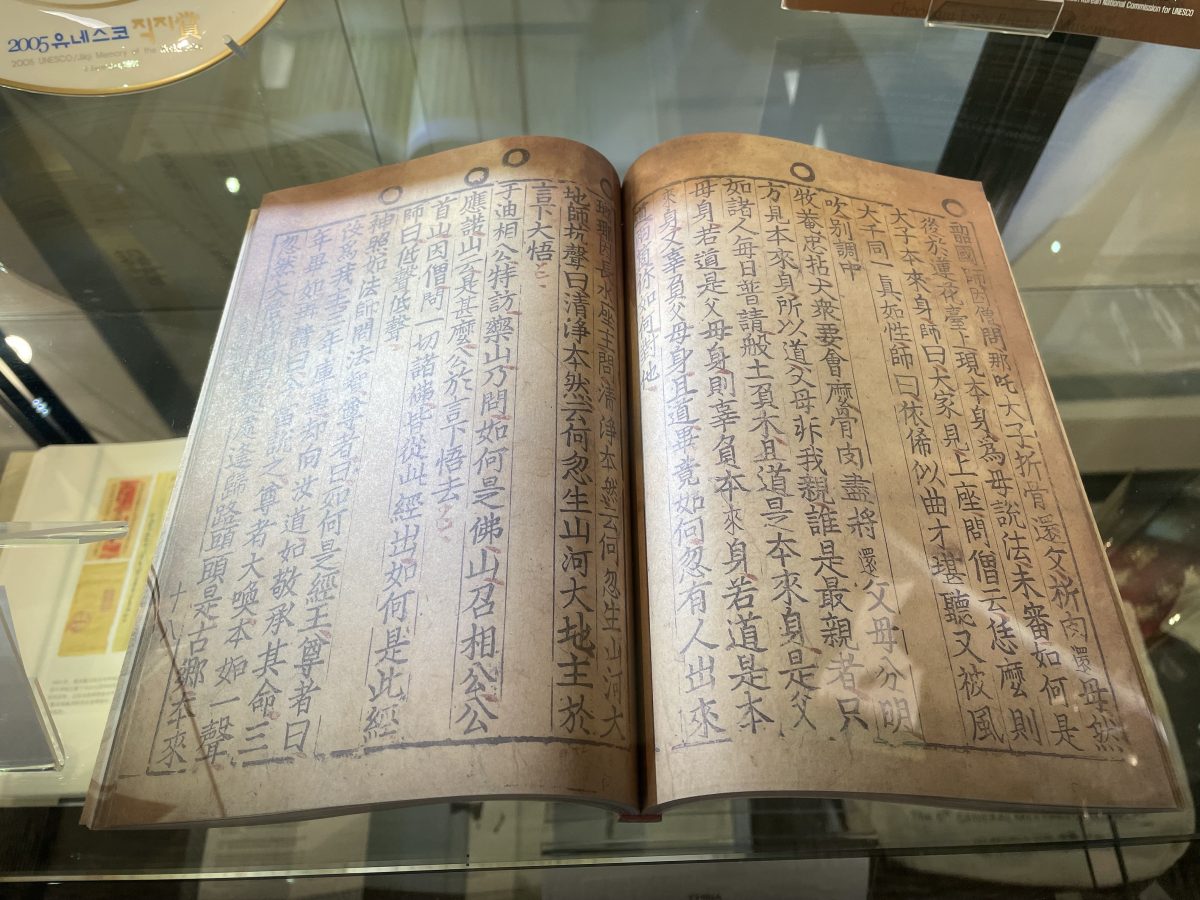
A facsimile of the Korean Jikji, the first book printed with movable metal type, now on display at the ACT Heritage Library.
Dr Russell said the UNESCO Memory of the World program, currently celebrating its 30th anniversary, was established in 1992 to preserve documents that are the physical, now digital, embodiment of the memories of individuals, nations, regions and the world – and to make them accessible to everyone.
“The UNESCO Australian Memory of the World Committee, the second national committee in the world, was established by Dr Jan Lyall of the National Library of Australia in 2000,” Dr Russell said.
“Throughout the program’s history, she and other Canberrans have undertaken significant roles at all levels, including developing program guidelines and chairing international and Asia-Pacific regional committees.”
Many of the items in the new Canberra Heritage Library display have been brought back by committee members from their travels, items that add to the story of what’s in the register and why. They range from commemorative pieces marking special events and rare silk from Suzhiu, China, as a memorial to the victims of the Nanjing massacre to intricate calligraphy from the National Library and Archives of the Islamic Republic of Iran.
She said Canberra’s national documentary heritage institutions – the National Archives of Australia, National Library of Australia, National Film and Sound Archive, Australian Institute of Aboriginal and Torres Strait Islander Studies and the Australian War Memorial – were represented on the committee.
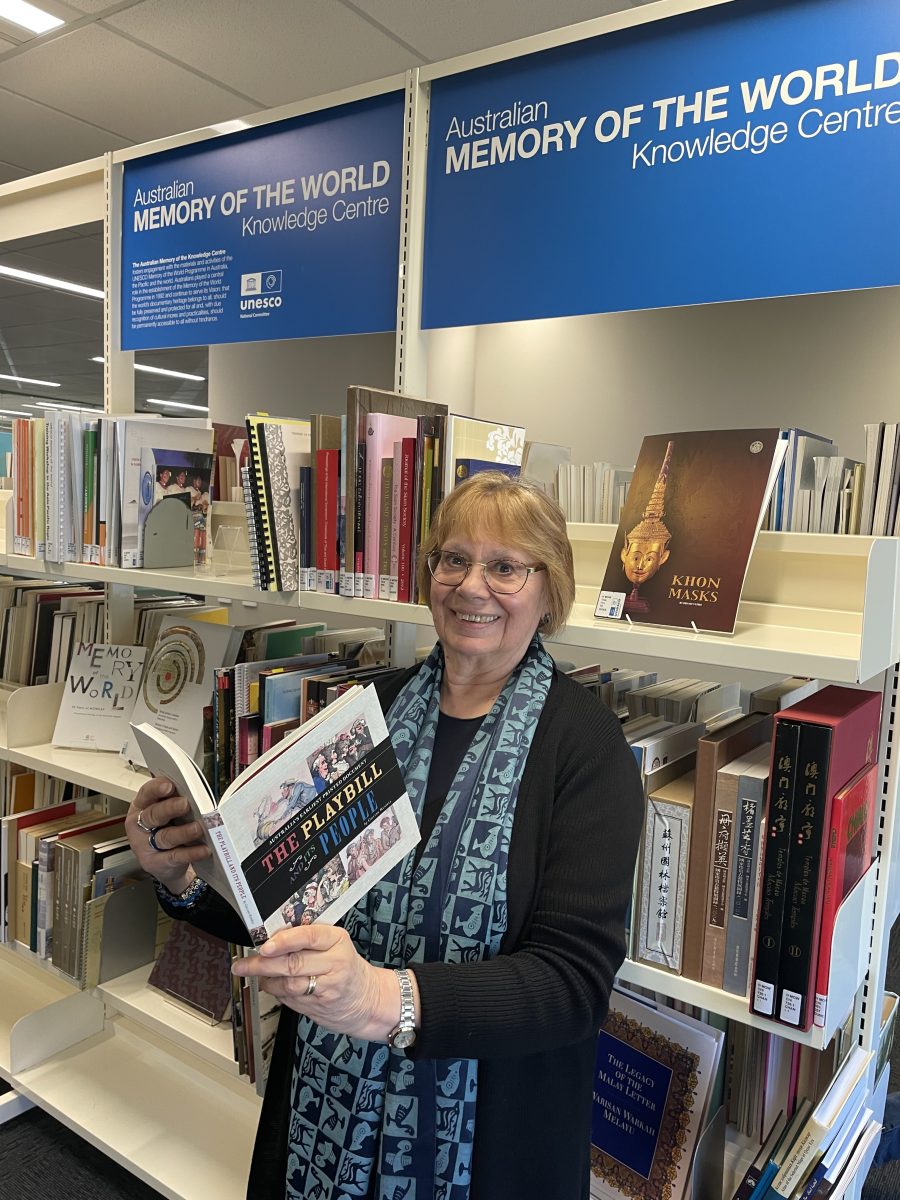
Roslyn Russell with a copy of a book about the Playbill, the oldest surviving printed document produced in Australia. The small poster advertises a theatrical performance in Sydney in 1796.
“The extensive involvement of some Canberrans with the program at the Asia-Pacific regional and international levels has resulted in an accumulation of resources now available for research at the knowledge centre,” she said. “There are publications about the program itself and others that deal with significant documentary heritage around the world.
“Canberra is really punching above its weight when it comes to its role in the program. Especially when you consider our youth.”
READ ALSO: ‘A glamorous lady’ – a brief history of Rydge’s Canberra Hotel
Dr Russell said the centre would be of particular interest to Canberra’s multicultural communities because they could discover aspects of their heritage in uniquely produced books in Chinese, Korean, Vietnamese, Farsi, Polish, Spanish and other languages. One of the special items on display is a facsimile of the oldest book printed using moveable metal type, the Jikji, published in Korea in 1377 – printed before the Bible.
The ACT Heritage Library at 255 Canberra Avenue, Fyshwick, is open daily from 9:30 am to 5 pm and from 10 am to 4 pm Saturdays.
More information about the UNESCO Memory of the World Knowledge Centre for Australia is available online.











